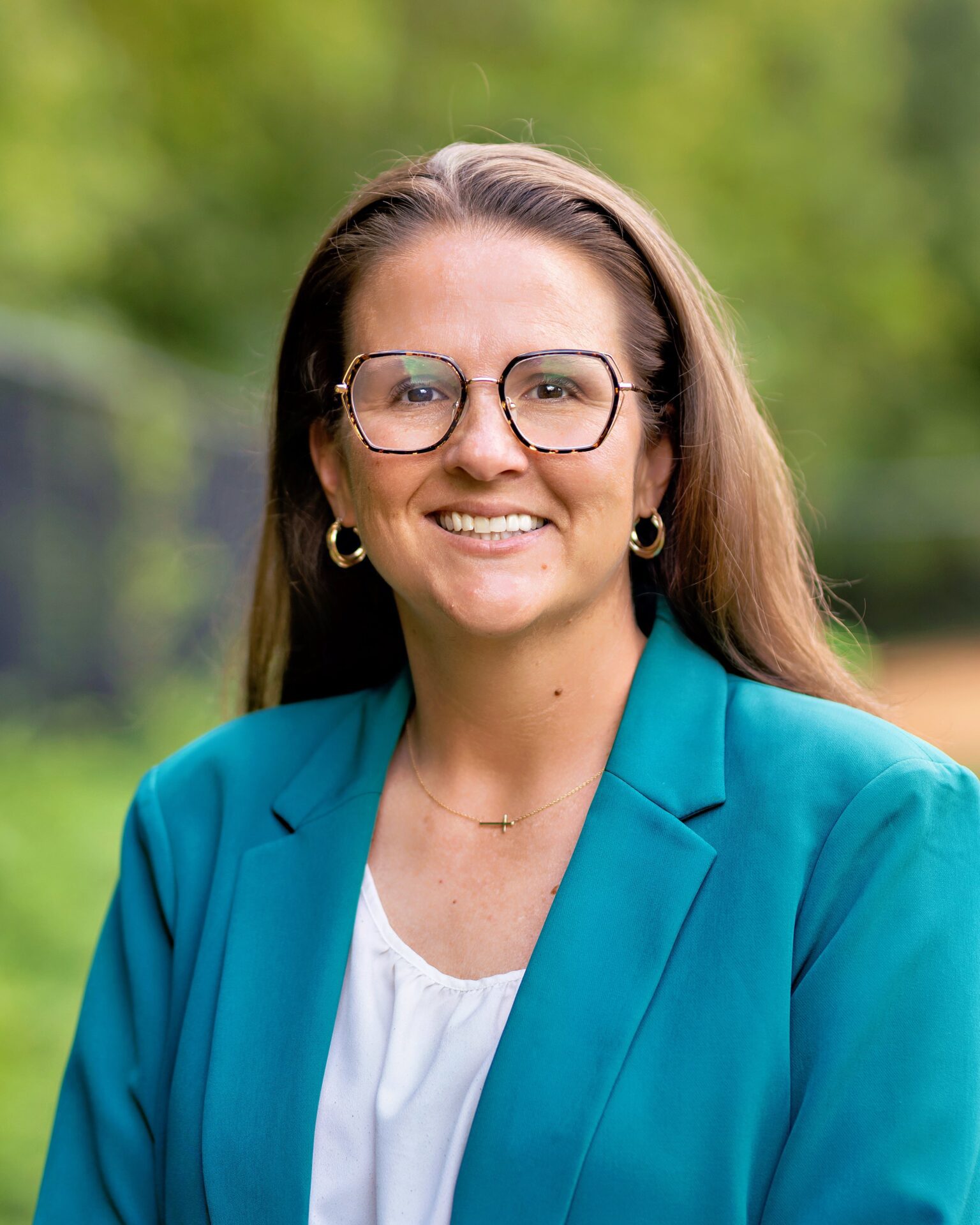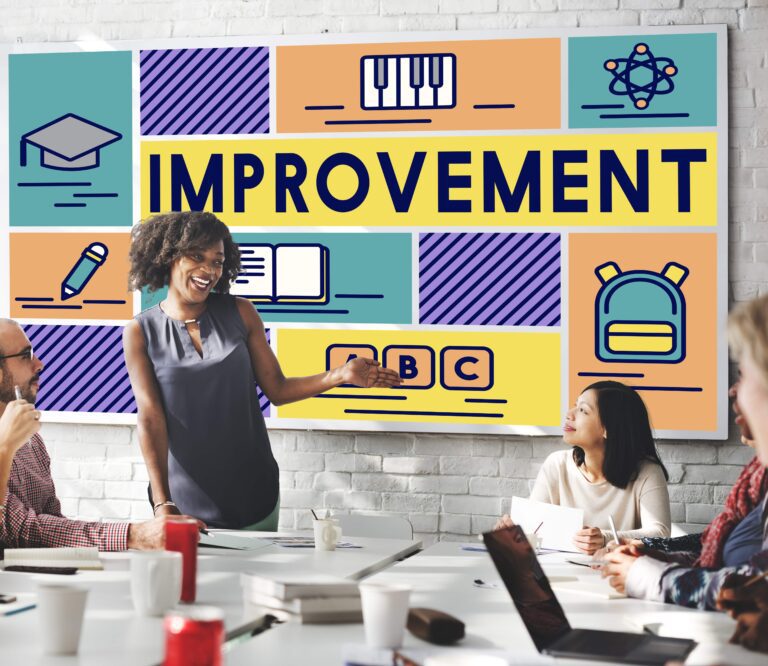Key takeaways
-
PLCs focus on teacher collaboration to improve student outcomes.
-
PLCs give teachers control over their ongoing development, providing a safe space to share, seek feedback, and continuously improve.
-
Effective PLCs require structure and shared goals.

Professional learning communities are a critical element for student success across all levels, content areas, and geographic regions. These communities, often referred to as PLCs, bring together small groups of educators regularly to improve student outcomes.
Professional learning communities provide a space for educators to collaborate rather than simply cooperate through task division. In a time when there is an overwhelming amount of information at our fingertips, PLCs create a structure for using formal and informal data in meaningful ways that inform planning and practice. In a PLC, teachers work together to continually improve student growth and achievement by focusing on enhancing instructional knowledge and skills.
What is a professional learning community (PLC)?
A professional learning community (PLC) can be any group of educators that meets on a regular basis with structures in place to improve their practices and outcomes for students. There is no magic formula to create a PLC. In fact, one of the elements that makes professional learning communities so effective is that each group will be unique to their shared goals, collaborative style, and commitment to improvement.
Many school leaders make it a point to remind staff members that a PLC is not the meeting itself or a stand-alone professional development opportunity. Instead, a professional learning community is made up of dedicated people. Strong institutions will have numerous professional learning communities operating at the same time.
An entire school with a shared vision for student success, with processes in place to allow for the use of data to help teachers improve, would be considered a PLC. Although this could be a place to start to get all staff members on the same track, most PLCs should be much smaller than an entire school to allow for purposeful conversation and teacher ownership of the group.
Professional learning communities intentionally put the control for ongoing professional development and growth in the hands of teachers. This is critical because providing leadership opportunities to teachers improves achievement levels for all students. When teachers have a space and system to share information and seek feedback in a safe setting, they can continuously improve their professional practices. PLCs also give school leaders a powerful structure for providing relevant professional learning opportunities for teachers, an approach that has been shown to increase staff retention at an individual school and within the educational field as a whole.
Common configurations for a PLC
Although there is no singular way to create a PLC, let’s consider elements that lead to a successful professional learning community:
- Dedicated educators
- Common goal for student success
- Scheduled meetings
- Respect for all voices
- Access to data
- Access to resources to support learning
- Structures for meetings
At the elementary level, the most common PLC would be a grade-level team with an overarching goal focused on increased achievement or growth. These teachers would select a day and time to meet each week. The first meeting would be an excellent time to establish norms to guide future collaboration. The team would determine in advance which content area they would discuss each time they come together. During their scheduled time, the teachers would analyze appropriate data sources and notice patterns from the findings. The outcomes from the analysis will lead to discussions about how to create or adjust instructional planning or practices. This process would occur each time the group meets, forming a team that consistently collaborates and reflects to improve performance.
Although teacher groupings might differ across levels, the overall structure of a PLC would remain the same. At the middle or high school level, it might make sense to have PLCs for teachers serving a common group of students, such as English language learners or students with IEPs. An additional advantage of a PLC is that teachers without counterparts at their own school could be a part of a group that operates across a district or even a state.
What is an example of a PLC?
Professional learning communities will look different within each individual school or school district.
- The elementary example in the previous section is a common PLC configuration, but other areas should also be considered.
- A leadership team is an example of a PLC with goals that could improve outcomes for staff members or students. A group of dedicated school leaders could analyze data on both micro and macro levels.
- New educators would be another example of a possible PLC. The early years of teaching can be overwhelming and this group could focus on goals related to overall student success, rather than simply a grade-level curriculum.
- At the secondary level, educators are often subject-matter experts in a specific field. A PLC could be formed that brings together one department, such as social studies, or focuses on one main course, such as world history.
What are the benefits of a PLC?
The most obvious benefit of a PLC is improved student results. However, it is how PLCs achieve these results that will have the most lasting impact on educators. Professional learning communities enable teachers to improve their practice and remain relevant in the ever-changing world of education. PLCs empower teachers to take control of their own professional learning. Educators can rely upon their colleagues or consider an additional educational resource to support their continuous improvement.
Collaboration
The number of responsibilities assigned to teachers can make every day a challenge. In true collaboration, educators work together to share and reflect, with the goal of creating something new or improving on something. It can be tempting to divide and conquer, but this often leads to stagnation and a lack of clarity in instructional planning.
Data collection and analysis
Implementing protocols within a PLC provides teachers with a structure for reviewing data together. Many schools are excellent at collecting data through progress monitoring, assessments, and grading. However, it is more challenging to use the data to change teacher instruction. Each PLC will have the autonomy to select and analyze data that relates to its goals.
Enhanced teacher strategies
When teachers meet regularly to share common goals, they will strengthen the skills they want to share with their students, including engagement, problem-solving, and self-efficacy. What is good for teacher practice is good for student learning. Building educational teams composed of reflective educators will drive innovation.
Improved student results
Years of research have shown that one of the most important factors in student success is the quality of teaching. To support existing and future teachers, there must be continued commitment to professional learning. Teachers working collaboratively to review their students’ needs and identify techniques to address these deficits is the most effective and efficient way to improve student outcomes.
How to create a professional learning community
The most important element of a PLC is a group of teachers who want to positively impact students. Once you have that group, it’s time to plan:
- Come together to identify your goals
- i.e., increase Lexile levels
- Scheduled meetings (weekly or twice a month)
- 60 minutes a week would be ideal, but work with what you have
- Establish norms for meetings and record keeping
- How will your team interact during meetings? How can you document the learning from the meeting without creating additional work?
- Identify necessary data sources and choose a protocol for analysis
- Tap into available resources
- consider human resources, interventions, book studies, etc.
- Develop the habit of sharing, collaborating, and reflecting.
When considering the question “What are PLCs in education?” remember that PLCs put teacher development at the center of student growth. If the idea of protocols or multiple data sources seems overwhelming, just start small. Bring together a group of teachers with a common goal. With time and space to discuss how students are doing and what strategies are working, teachers will learn with and from their colleagues in an authentic way that cannot be reproduced in a “sit-and-get” professional learning session. To empower students, school leaders must first empower teachers.







